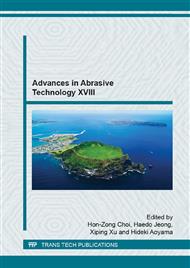p.515
p.520
p.526
p.531
p.537
p.543
p.549
p.555
p.561
Surface Integrity of the Compressor Blade when Employing Different Polishing Method
Abstract:
The compressor blade is the key components of the aero-engine to seriously impact the air dynamic performance. However, components with complex designs specifications might pose manufacturing challenges especially when finishing processes are needed to enable their compliance with tight industrial standards for workpiece surface integrity. Information on polishing processes for such sensitive industrial applications is scarce. The paper reports on the influence of polishing methods on the surface integrity of compressor blade obtained after different polishing methods. The research focuses on identifying an “optimised” polishing method for different area that will enable finishing the compressor blade. Two (belt; bob) polishing methods have been tested to address the overall finishing of compressor blade. Although significant differences in tool life performance exist between belt and bob polishing methods, both are capable to meet the requirements of minimum workpiece surface coverage if “optimised” operating parameters are employed. This is proved that belt and bob polishing methods can be employed to enable automated overall finishing of compressor blade.
Info:
Periodical:
Pages:
537-542
Citation:
Online since:
January 2016
Authors:
Keywords:
Price:
Сopyright:
© 2016 Trans Tech Publications Ltd. All Rights Reserved
Share:
Citation:


